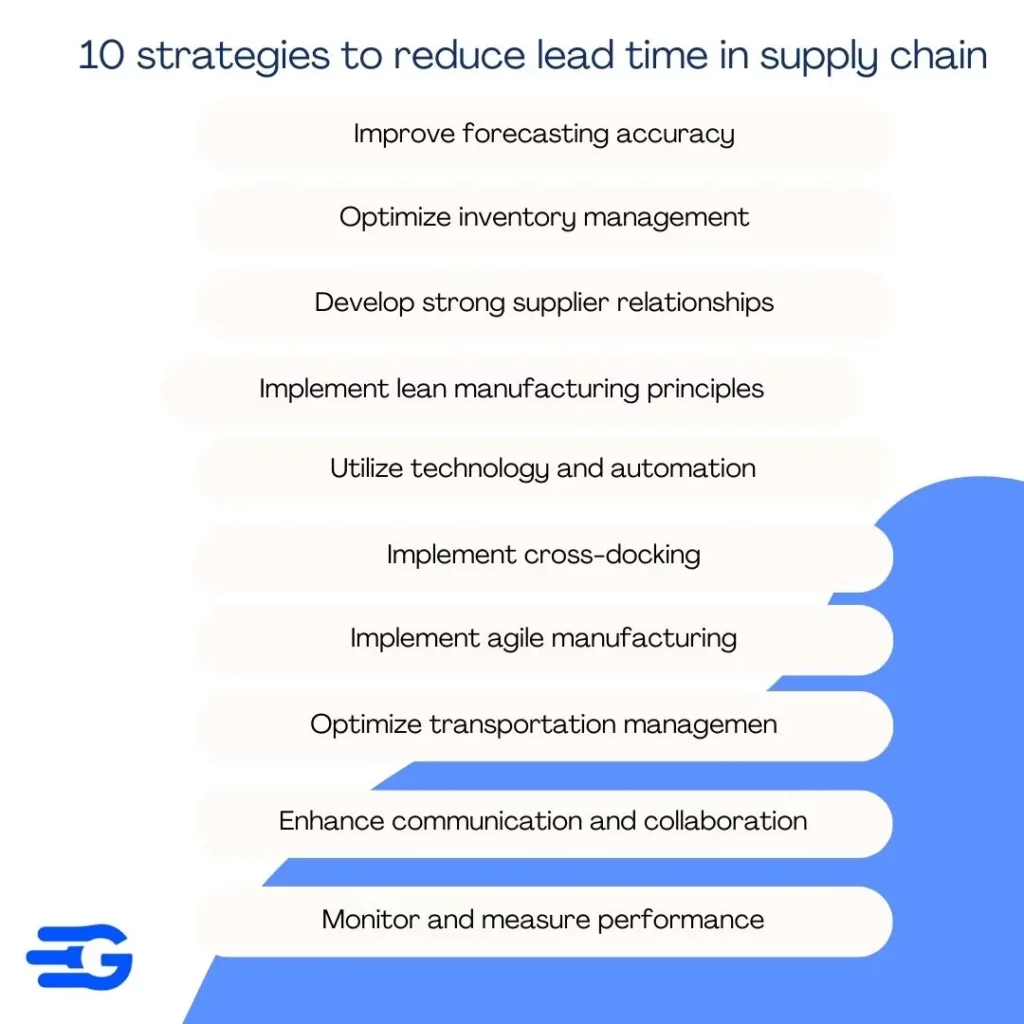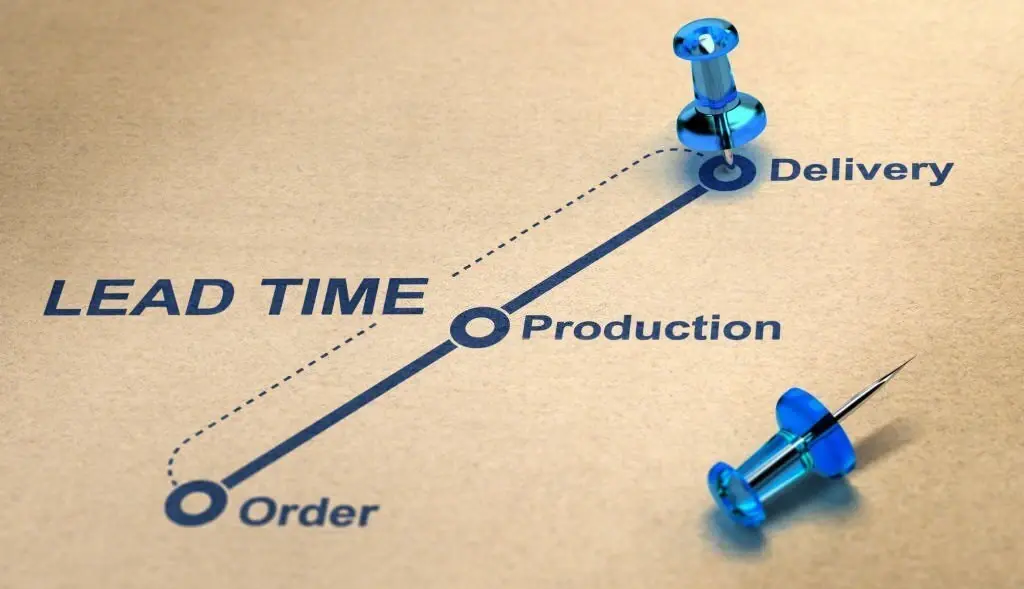10 proven strategies to reduce lead time in supply chain
Following a series of exceptionally demanding years, manufacturers worldwide continue their pursuit of refining their logistics and operational strategies. Out of the many things that need to get better is to reduce lead time in supply chain, that is the time taken to make and deliver a product after someone places an order.
Prolonged lead times detrimentally affect customer satisfaction, potentially resulting in decreased orders or, worse yet, customers defecting to competitors. Consequently, streamlining lead times and effectively managing your supply chain are crucial for achieving growth and attaining success.
What is Lead time in supply chain?
Lead time in the supply chain refers to the amount of time it takes for a product or material to move from the initiation of the production or procurement process to its arrival at the final destination. It represents the total time required to fulfill an order or complete a production cycle. Lead time encompasses various activities, such as order processing, manufacturing, transportation, and delivery.
Lead time is a crucial aspect of supply chain management as it directly impacts customer satisfaction, inventory management, and overall operational efficiency. By accurately estimating lead times, companies can effectively plan their production schedules, optimize inventory levels, and meet customer demands in a timely manner. Furthermore, understanding lead time helps in identifying bottlenecks, streamlining processes, and improving overall supply chain performance.
Why is measuring Lead time necessary in the supply chain?
Lead time provides valuable insights into the timing of activities within the supply chain, enabling businesses to optimize their operations, enhance customer service, and make informed decisions about inventory, production, and resource allocation. Here are five key points that highlight the importance of lead time and the necessity to reduce lead time in supply chain:
Planning and Coordination: Lead time provides essential information for effective planning and coordination within the supply chain. It allows businesses to determine the time required to fulfill orders, allocate resources, and synchronize activities across various stages of the supply chain.
Inventory Management: By knowing the lead time, businesses can calculate the reorder point and safety stock levels accurately. It helps in avoiding stock outs or excessive inventory, optimizing inventory levels, and reducing holding costs.
Customer Service and Fulfillment: Providing accurate lead time estimates to customers helps in managing their expectations and meeting delivery commitments. A shorter lead time can enhance customer service and improve the overall customer experience.
Production Planning: Lead time allows manufacturers to determine the time needed for raw material procurement, production setup, and manufacturing processes. By considering lead time, production can be scheduled efficiently, reducing bottlenecks and optimizing production capacity.
Supply Chain Optimization: Lead time analysis is crucial for identifying bottlenecks and inefficiencies in the supply chain. By measuring lead time at each stage, businesses can identify areas for improvement, streamline processes, and implement strategies such as vendor management, transportation optimization, or production process optimization.
10 strategies to reduce lead time in supply chain
To reduce lead time in the supply chain is crucial for improving operational efficiency, meeting customer demands, and gaining a competitive edge. Here are some strategies to reduce lead time in supply chain:

- Improve forecasting accuracy: Accurate demand forecasting is crucial for minimizing lead time. By analyzing historical sales data, market trends, and customer behavior, you can make more precise predictions. Consider using statistical models, machine learning algorithms, and collaboration with sales and marketing teams to enhance forecasting accuracy.
- Optimize inventory management: Excess inventory can lead to longer lead times and increased carrying costs, while stock outs can result in customer dissatisfaction. Adopting just-in-time (JIT) inventory practices allows you to maintain lean inventory levels. Continuously monitor demand patterns, set reorder points, and implement automated replenishment processes to optimize inventory management.
- Develop strong supplier relationships: Building strong partnerships with suppliers is vital for reducing lead time. Regularly communicate with suppliers to share forecasts, discuss production schedules, and address any issues promptly. Collaborative relationships facilitate better coordination and help ensure timely delivery of materials and components.
- Implement lean manufacturing principles: Lean manufacturing principles, such as value stream mapping and continuous improvement methodologies like Kaizen, aim to identify and eliminate waste in production processes. By streamlining workflows, eliminating bottlenecks, and reducing non-value-added activities, you can improve efficiency, shorten lead times, and enhance overall productivity.
- Utilize technology and automation: Implementing technology solutions can significantly enhance supply chain efficiency. Enterprise resource planning (ERP) systems centralize data, enabling better visibility and coordination. Supply chain management (SCM) software optimizes order processing, inventory management, and logistics. Warehouse automation tools, such as robotic picking systems, can accelerate order fulfillment and reduce human error.
- Implement cross-docking: Cross-docking is a logistics strategy that involves transferring goods directly from inbound to outbound transportation, minimizing or eliminating the need for storage. By reducing handling time and bypassing intermediate storage, cross-docking enables faster order processing and delivery.
- Implement agile manufacturing: Agile manufacturing emphasizes flexibility and responsiveness to changing market demands. By adopting modular production systems, flexible workforce arrangements, and versatile equipment, you can quickly adapt to fluctuations in demand. This enables shorter lead times by reducing changeover times and facilitating faster production.
- Optimize transportation management: Logistics management software is pivotal in the supply chain, particularly concerning transportation, which significantly affects lead time. Assess your transportation network with the aid of logistics management software to pinpoint optimization opportunities. This involves consolidating shipments, leveraging various modes of transportation, and fine-tuning routes to reduce transit time. Transportation management systems (TMS), integral components of logistics management software, offer robust tools for streamlining freight planning, execution, and tracking processes.
- Enhance communication and collaboration: Effective communication and collaboration among supply chain stakeholders are crucial for reducing lead time. Establish open lines of communication with suppliers, manufacturers, distributors, and customers. Collaborative platforms and cloud-based systems facilitate real-time information sharing, enabling faster decision-making and issue resolution.
- Monitor and measure performance: Regularly monitor and measure key performance indicators (KPIs) related to lead time and other supply chain metrics. Analyze data to identify areas for improvement and take corrective actions. By continuously monitoring performance, you can proactively address delays, bottlenecks, or inefficiencies in the supply chain.
Conclusion
Reducing lead time in the supply chain is a critical factor in achieving operational excellence and gaining a competitive advantage in today’s fast-paced business environment. By minimizing the time it takes for products to move from the initial order placement to the final delivery, organizations can enhance customer satisfaction, optimize inventory management, and slash lead times through optimized supply chain management.
